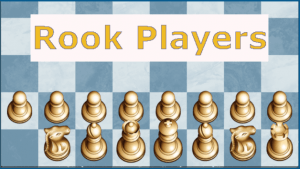
Winning in Style
This is simply a compilation of sparkling games.
My original intention was to title this Chess Brilliancies but upon reflection, I wasn't convinced the definition was applicable. I tend to think of brilliancies as remarkable conceptions during games between highly and equally skilled players. While they often involve marvelous tactics, brilliancies can be extraordinary in other ways too.
The games here mainly shine tactically and while some are played between people of relatively equal ability, in other games the skill disparity is obvious. Although none of Paul Morphy's games are featured here, all the game contain what J.H. Blackburne used to call a bit of Morphy.
We will start off with a few gems from Blackburne himself. If anyone carried Morphy's torch, it was Joseph Blackburne. Like Morphy, Blackburne seemed to play even more glittering chess when giving odds or when blindfolded.
.
.
.
.
.
.
.
.
.
.
.
.
These next two jewels come from the 6th American Chess Congress of 1889. In both games the players who lost are playing White.
 George Hatfeild Gossip beats Jackson Whipps Showalter—
George Hatfeild Gossip beats Jackson Whipps Showalter—
.
.
.
 William Henry Krause Pollock
William Henry Krause Pollock
"The latter part is worthy to rank among the few immortal games we possess."—Hoffer.
"Mr. Pollock's play from the 17th move, renders this game one of the finest monuments of Chess ingenuity; and altogether this game belongs to the most brilliant in the annals of practical play."—Steinitz.
The prize offered for the most brilliant game in the tourney was awarded to Mr. Pollock for this game.
The above quotes about the game below come from Chess by R.F. Green 1893
In this game, William Henry Kraus Pollock defeats Max Weiss—
.
.
.
The following three games are Muzio Gambits (1. e4 e5 2.f4 exf4 3. Nf3 g5 4.Bc4 g4 5.0-0) in which White gambits an entire Knight (or a Knight and a Bishop in a Double Muzio) right in the opening.
The hypermodernist Richard S. Réti plays hyperomantically
.
.
.
Next, Janowski starts off minus a knight and then plays the Muzio!
John Cazenove (1788-1879) was the son of a Genovese merchant who migrated to London. He published, anonymously, some pamphlets on economics, such as Principles of Political Economy and also published a now-rare chess book entitled A selection of curious and entertaining games at Chess in 1817. Cazenove had been president of the London Chess Club for a time.
Here, Cazenove lets us witness a brilliant Queen sacrifice in a King's Gambit miniature.
.
.
.
Three of the great Russian chess players before Tschigorin came on the scene were Alexander Petroff, Carl von Jaenisch and Ilya Schumoff.
This famous game, nicknamed Petroff's Immortal, was played in Warsaw in 1844 against Petroff's frequent chess partner, Alexander Hoffmann.
.
.
.
Below is a sparkling game played between Schumoff and Jaenisch in St. Petersburg in 1845.
.
.
.
Here is a little tactical brilliance from the Austrian Morphy, Wilhelm Steinitz, who defeats an amateur, the ubiquitous NN, with style:
.
.
.
Conrad Bayer was a well known chess problemist, one of the greatest of his day. Here is an example of brilliant OTB play by Conrad who, as black, employs the Falkbeer counter-gambit against the King's Gambit.
.
.
.
[Sir Alfred Kempe was a British ecclesiastical barrister and diocesan chancellor best known for his work as an amateur mathematician.] The bracketed sentence was my original assessment. From the comment section, it can be seen that the chess player is an entirely different Alfred Kempe.
Several of Alfred Kemp's amateur chess games had been published in chess periodicals of his day and later in various games collections.
In this game, he sacs his Queen to let his Rook eat pieces like Pac-man, then allows the Rook its own sacrificial demise to force mate.
.
.
.
Sir Kempe played blindfold with the same panache in this game the might be loosely described as a Muzio Deferred:
.
.
.
Karl Lepge (1831-1890) and August Saalbach played a series of games, two of which are recorded in Fiske's (and Morphy's) 1860 Chess Monthly. Both Lepge and Saalbach had some losses published in Schachzeitung against Anderssen and Paulsen. They were all played even, so apparently they were both players of some force. In this KGA (Bishop's Gambit) game Saalbach loses to Lepge's clever, some might say brilliant, play:
.
.
.
But to be fair to Saalbach, who edited the chess section of the Leipziger Sonntagsblatt and who died in December 1864, here is a pretty miniature he won in 1861 (his opponent, Hermann Herrmann Pollmächer, died on December 24th of the same year as this game):
.
.
.
. This leads to a nice little story I came across in the January 1892 edition of the Deutsche Schachzeitung involving Carl Lepge but related by Richard Mangelsdorf who witnessed it. Lepge and Alfred Schmori (a German player of comparable strength) were in the Café National, the chess center of Leipzig, in November 1963. They were deeply involved in analyzing a game when a stranger walked in and started quietly observing their exchanges. They asked the stranger for his opinion on a variation and were taken back by the depth of his ideas. Mangelsdorf said he thought this had to be Louis Paulsen but Paulsen wasn't known to be in town. The following day the stranger returned and confessed he was indeed Louis Paulsen. Paulsen, now a known entity to the Leipzigers, returned to the Café National in January of 1864 and upon being coaxed, played four blindfold games. Carl Lepge, Hermann Hirschbach and Richard Mangelsdorf, editor of the chess column in the lllustrirten Zeitung, were all present. Paulsen played the following game (however, it was not until the next day when Paulsen returned to the Café National that Mangelsdorf though to ask him for the moves and Pauslen rattled them off from memory). On the 13th move, Paulsen announced mate-in-11,
.
.
.
.
Although born in the Lviv Oblast of present-day Ukraine, Jakob Rosanes received his degree, like his contemporary Adolf Anderssen, in Mathematics from the University of Breslau where he eventually became a professor. Most notably, he and Anderssen contested a small series of recorded games of which Rosanes won about half. In the following game, however, Rosanes takes on an amateur whom he defeats with breath-taking panache . . . maybe even brilliance.
.
.
.
In 1863 Ignatz Kolisch played Ladislas Maczuski a short 4 game match, drawn 2-2. Three years prior, Kolish had been winning against Maczuski, already a published problemist, giving him Knight odds. Later Maczuski would be a talented blindfold player and editor of Le Palamède français and Le Pion.
.
.
.
Maczuski played a four-board simul at the Ferrara Chess Club on May 31, 1876. In one game, given below, he announced mate-in-11. I couldn't find this 11 move mate, but I was able to work out a decisive advantage for White.
.
.
.

Finally, we come to the end with a bit of mechanical Morphy. The automaton Mephisto (here operated by Isodor Gunsberg) plays the British chess columnist and master Samuel Tinsley, who, if had hoped to show up the entertainment-oriented creation, finds himself turned into fried liver.






